Heritage legacy
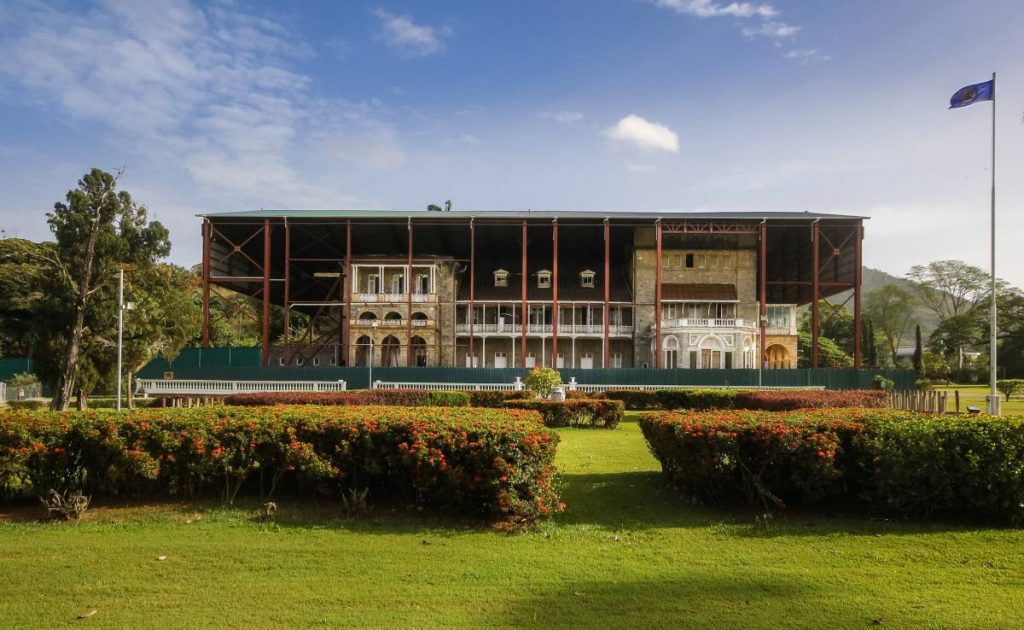
SHEREEN ALI
Not all older buildings are worth the effort of preservation. In some cases, people argue it may be simpler and cheaper to simply start anew. But some buildings are treasures because they are distinctive symbols of our history, carrying a special resonance about our past realities and the peoples who came here. As bearers of parts of our culture, they can give a sense of permanence, dignity, and pride.
There are stories to be told here, from the design and craftsmanship of the construction to the lives of the people who once lived in, worked in, or helped build them. Even flamboyant buildings which were once high symbols of colonial white privilege in a multi-ethnic society can be repurposed to new, more democratic and more creative uses to serve the public interest.
Jamaica, for example, has long seen the value of preserving many of its historic buildings, including forts, churches, great houses, court houses and five unique historic districts spread across that sister island.
Trinidad has many historical gems of its own, which for decades were ruinously neglected. In a 2015 travel story for the UK Guardian by Josh Surtees, TT architect Rudylynn Roberts, a member of Citizens for Conservation with a love for old buildings (at one time she headed the TT Government Historic Restoration Unit), commented on the quirky beauty of The Magnificent Seven buildings near the Queen’s Park Savannah in Port of Spain.
She said: “The mansions around the Savannah are often forced into European terms to describe the architectural styles, but really they are all eclectic, each one trying to outdo the others. They don’t follow the rules. Instead, they borrow from various countries and styles and then adapt the whole to a tropical aesthetic and utility. Trinidadian architecture expresses our free spirit, multi-ethnic and cultural origins, our desire to be different from our neighbours and our creative individuality.”
Buildings of historic value can have remarkably unique architectural features that can be a great deal more interesting to personally experience than the modernist office blocks of today, or our ubiquitous concrete shopping malls, symbols of American-style consumerism.
Great historic buildings such as the rugged, medieval castles of Scotland, the Great Mosque of Djenné in Mali, or the Taj Mahal of India let us dip our toes into different times and spaces, adding character and interest to a place. Historic buildings are not only educational, but can be valuable tourism sites, even if we ourselves are the tourists, trying to understand our own country from different perspectives, and especially from our own.
The state has been moving apace to restore some of TT’s most iconic historic buildings, with Prime Minister Dr Keith Rowley handing over the completely restored Stollmeyer’s Castle last Thursday to the Ministry of Community Development, Culture and the Arts. The Prime Minister, since 2016, has chaired a special sub-committee of Cabinet to oversee restoration and refurbishment of five buildings: Stollmeyer’s Castle, President’s House, White Hall, Red House and Mille Fleurs. Back in February 2016, the Government promised to restore these buildings within five years, by 2021.
The Project Management Advisory (Physical Infrastructure) division of the Office of the Prime Minister (OPM) shared with Newsday an update on progress on each of these five buildings. Summaries of the historic importance of each building are courtesy public websites of The National Trust, the Urban Development Corporation of Trinidad and Tobago Ltd (Udecott), and the historical blog site of Gerard Besson (http://caribbeanhistoryarchives.blogspot.com).
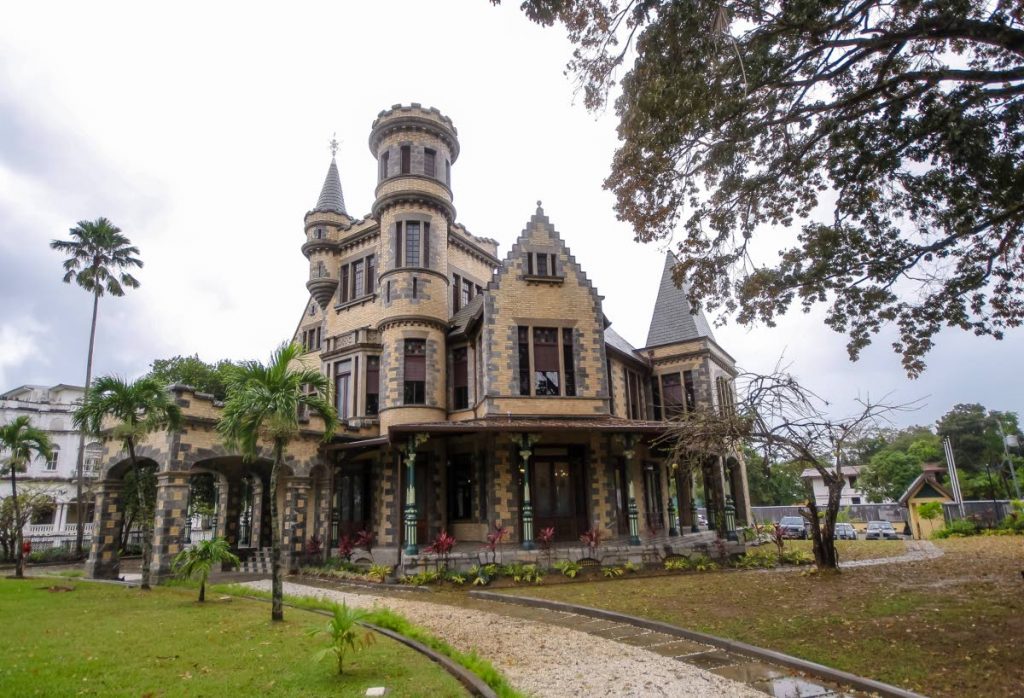
Stollmeyer’s Castle
Lot 31, Maraval Road, Port of Spain
Stollmeyer’s Castle, also called Killarney, was built in 1902-1904. It is named for Charles Fourier Stollmeyer, who hired the Scottish architect Robert Gillies to design the house, which is said to be patterned after a wing of Balmoral Castle in Scotland. One of the first houses to be built in St Clair near the Queen’s Park Savannah on government farm stock lands, it is a distinctive privately built home which resembles a wild fairy tale castle. During World War II, US forces occupied Killarney because of its fortress-like qualities and dubbed it The Castle. It became known as Stollmeyer’s Castle after that. The Stollmeyer family sold it in 1972 to an insurance executive, Jessy Mahabir. The government bought the property in 1979 and it became part of the Office of the Prime Minister until 2007.
Udecott notes that Stollmeyer’s Castle is a key feature of Port of Spain’s architectural legacy: “Its unique design, unrivalled in all of TT, is a source of tremendous pride to observant nationals and a centrepiece of historical tourism in the capital city.”
Status
Stollmeyer’s Castle has been completely restored at a cost of $16 million. Cabinet has decided it will be an arts and cultural centre, under the purview of the Ministry of Community Development, Culture and the Arts. It is expected that historical guided tours, arts exhibitions, book launches and special events will take place there, with Cazabon paintings soon to be displayed on site.
The management committee currently appointed by the National Academy for the Performing Arts (NAPA) will manage activities at the castle, while Udecott is responsible for maintenance and security of the physical structure and grounds.
Detailed work
The OPM says the scope of restoration works included the main building, stables building and external works. The project team comprised members of the OPM, Udecott (project manager), Bernard Mackay architect/Donald Insall architect (design consultant), Rudylynn Roberts Architect Ltd (oversight consultant) and Fides Limited (general contractor). Subsequent to tender evaluations, the contract for the general contractor for restoration works was awarded on January 10, 2017. Stollmeyer’s Castle has been successfully restored to its original design using a Grade III Restoration Standard. The defects liability period commenced on July 1, 2017 and will end on June 30.
President’s House
Next door to the Royal Botanic Gardens, Port of Spain
In 1818, Governor Sir Ralph Woodford bought part of the Peschier family’s Paradise Estate to create what is now the Queen’s Park Savannah, dedicating part of the property to the botanical gardens and the construction of the Governor’s House. The original Governor’s House was destroyed by fire in 1867 and rebuilt in 1873-1876, patterned after Victorian style colonial architecture. In the interim, the Governor lived in the estate manager’s annex, known as The Cottage. After TT became a republic in 1976 the main property, including the annex, was renamed President’s House. President’s House was built mainly of iron and steel superstructures, clad in local blue limestone from the Piccadilly and Laventille Quarries. The roof consists of Welsh Duchess slates, and the gardens are made up of plants and flowers brought there from many different parts of the world.
The OPM says President’s House will be restored to accommodate the president, with provisions made for official functions and entertainment of guests. All restoration works will occur in accordance with a combination of Grade II/III Restoration Policy. Preparatory work began just last month and should be completed by the end of 2019.
Detailed work
In 2016, the OPM engaged Udecott to provide procurement management services and design consultancy for the project. Since then, the main building has been cleaned and all debris has been removed. Through consultation with the Office of the President, they identified salvageable items and stored them. Additionally, they built a temporary structure for staff of the Office of the President, who operated from the West Wing (laundry and army quarters). They have also completed an intensive asbestos abatement exercise on the main building and laundry.
The request for proposal for the procurement of a modified design build contractor was issued on July 20, 2017. Evaluation of the submitted proposals began in October 2017 and Unicom Limited emerged as the preferred proponent with the lowest fee proposal, says the OPM.
The scope of works of the project includes: structural retrofitting of the historic buildings; rebuilding the West Wing superstructure; rebuilding/repair of the entire roof; site drainage; re-pointing of exterior walls and repair of exterior detailing; restoration of interiors; completion of historic laundry building to use as an administrative office; external works; and the pool.
Unicom Limited began efforts on March 14. The project will take 15 months and should be completed within the fourth quarter of 2019. Udecott says it intends to “employ lean construction methods to increase production and quality whilst reducing cost.”
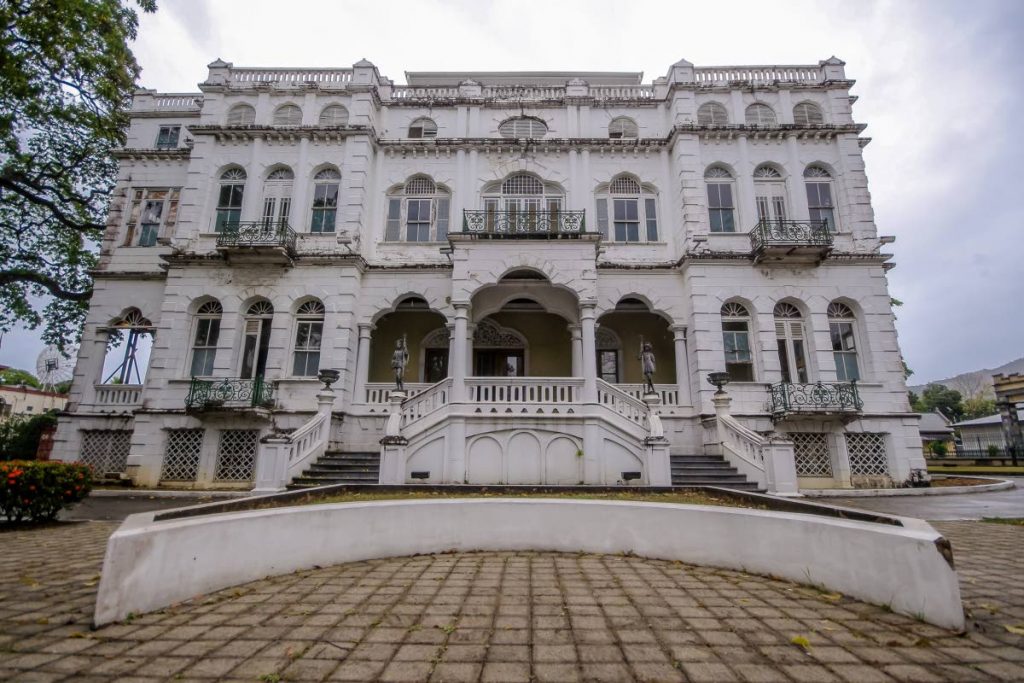
Whitehall
29 Maraval Road, Port of Spain
Whitehall was built in 1904 by Joseph Leon Agostini, a wealthy cocoa planter of Corsican heritage. JL Agostini designed it, influenced by the Venetian style while echoing the architecture of Corsica. The private residence was built of Barbados coral brought to Trinidad by sloop. But the cocoa industry collapsed, and after JL Agostini died in 1906, his family sold the house to Robert Henderson, an American businessman from Venezuela. The Hendersons named it Whitehall after the coral stone from which it was built.
During the Second World War, with the arrival of the United States forces to Trinidad, Whitehall was commandeered from the Seigert family, heirs of Robert Henderson, as headquarters of the Air Raid Precaution. In 1944, the British Council rented the building as a cultural centre. Later, the Trinidad Central Library, Regional Library, National Archives, Government Broadcasting Unit, Trinidad Art Society and the Cellar Club all occupied space in the building. From 1949, the building remained empty until 1954, when the government bought it.
In 1957, Whitehall was occupied by the Pre-Federal Interim Government prior to the envisaged establishment of the West Indies Federation in 1958. In 1963, it became the Office of the Prime Minister occupied by Dr Eric Williams, TT’s first prime minister after independence. Restored in 2000, Whitehall continued to be occupied by the Office of the Prime Minister until 2009.
Status
This project aims to return the Prime Minister and Cabinet to the historical location of the Office of the Prime Minister. It is still being planned, with works to be completed by the end of 2019. Udecott has been mandated to do further restoration works and outfitting upgrades on Whitehall and the Mews buildings located at the rear of the property, including construction and outfitting of a reception and service building and resident staff facility, internal building works, external works, specialty works such as architectural refurbishment, roofing works and landscaping.
Detailed work
Udecott was appointed to supply project management and construction management services and began tendering efforts. The request for proposal for the procurement of a modified design build contractor was completed and issued on July 11, 2017 along with the necessary supporting information. The proposals were evaluated, however, the OPM advises that “the tender was concluded without result since the proposals exceeded the project budget.”
As a consequence, the OPM says “the project approach was re-evaluated and will now be executed through the engagement of a number of smaller contractors. This will permit enhanced cost effectiveness and improved management of the required works.”
• The scope of the works is wide-ranging, and includes: restoration/refurbishment of White Hall building, including structural rehabilitation;
• restoration of Mews building, including structural rehabilitation;
• restoration of services building, including structural rehabilitation;
• mechanical, electrical and planning (MEP) supply and installation (new supply and installation);
• external works including landscaping; and
• restoration of furniture.
The OPM says it will collaborate with other public bodies and implement “value engineering practices” to help this restoration project progress. They note the project budget includes the engagement of an historical consultant. The project will take nine months, with works scheduled to be completed within the fourth quarter of 2019.
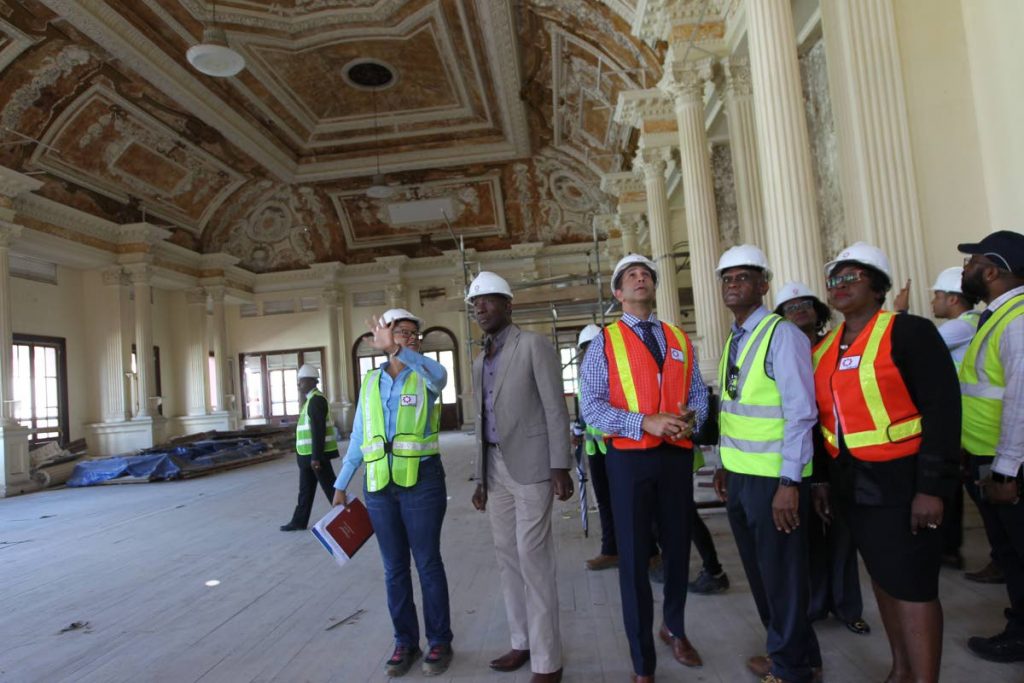
Red House
25-27 Abercromby Street, Port of Spain
In 1808, a huge fire razed Port of Spain, destroying most of the wood and shingle buildings. To prevent future such disasters, Governor Hislop passed legislation that future buildings there had to be made of brick and stone. Hislop’s successors followed this directive, and in 1844, Sir Henry McLeod laid the foundation stone for a new government building on the site where the Red House now stands. This first Red House (though it was not called that) opened in 1848, even though the building was not quite completed. Fifty years later, it was still not completed. In 1897, the Diamond Jubilee of Queen Victoria, Trinidad spruced up and painted the building red. Henceforth Trinidadians called it the Red House.
In 1903, an enraged mob seriously damaged the Red House in the Water Riots. Rebuilding began in 1904. The second Red House is what stands today. Designed and built by German architect Daniel Hahn, it was built more elaborately than its predecessor. The new building was for the Legislative Chamber and the Offices of the Governor, the Attorney General, the Colonial Treasurer, and the Law Courts. Hahn added the high central cupola popularly known as the rotunda, the ornate stucco ceilings and the fortifications around the roof.
In 1990, an attempted coup held the prime minister and members of government hostage in the Red House for six days and damaged the building. It was not until 26 July 1991 that the traditional chamber was restored to its original status.
In the decades since then, however, the building has been in need of many urgent repairs, and Parliament relocated activities in October 2011 to Tower D, International Waterfront Centre, Wrightson Road to allow for Red House restoration.
In April 2013, during renovation work, ancient remains of four First Peoples’ bones and pottery artefacts were unearthed at the site of the Red House. On October 11, 2017, the PM said the bones would be properly interred and a memorial erected when the Parliament returns to the building in 2019.
Status
The Government plans to return Parliament to the Red House. The estimated budget for restoring it is $441 million. Construction work restarted in December 2016 and is continuing, with an estimated completion date of the first quarter of 2019. Udecott was appointed to supply project management and construction management services.
Plans by the former PP government to build a $600 million administrative complex to house parliamentary support staff were scrapped after the PNM assumed office in September 2015, and the Cabildo Chambers (to be refurbished and expanded) will instead house the support staff.
Red House restoration works were split into 15 work packages. Udecott issued the RFPs for open tender. So far, 12 of the 15 work packages have been awarded and works are progressing on site. The OPM advises that tender evaluations have been completed for all 15 work packages.
Detailed work
All of Package 1 (site works, demolition and alterations) has been completed. By February, most of Package 2 was also done (77 per cent of works up to ground floor slab, structural works and internal block wall). And half of Package 3 is done (structural seismic retrofit). Roughly a third (27 per cent) of Package 5 is complete (roofing and associated carpentry works). The stages of the remaining work packages are contained in the table.
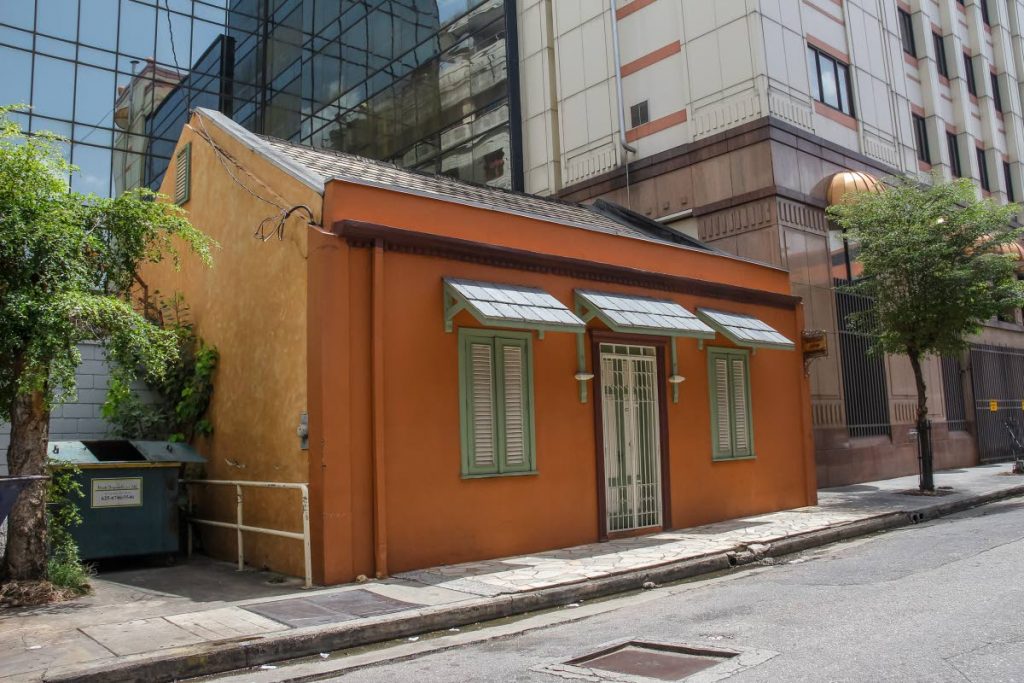
Cabildo Chambers
6 Sackville Street, Port of Spain
The small Cabildo building dates from Spanish colonial times (1826) and is about 200 years old. Cabildo buildings were probably built in the early 1800s, says history professor Bridget Brereton in the YouTube video Within These Walls (part of a series for the Parliament Channel) posted in 2014. The Cabildo members – all male, white, Catholic and property owners - had wide executive powers when Trinidad was a colony of Spain, and governed Trinidad’s bigger towns.
When the British seized power from Spain in 1797, Governor Thomas Picton chose not to abolish the Cabildo. Later, in 1840, the Cabildo was abolished and replaced by an English type of borough council, says Brereton. The Cabildo building is small and would not have been a main meeting place for the Cabildo, but a smaller outbuilding, or perhaps temporary quarters during one of Port of Spain’s fires. It is Spanish-style, inward facing, with thick walls opening out to a small fountain in a refreshing interior courtyard. The building was abandoned for many years and saved from demolition in the 1980s by the TT Institute of Architects. Today it is a law museum featuring C18th handcrafted mesquite furniture.
Status
The Government envisions a significant expansion of this building to house Parliament support staff. The RFP for the project mentioned the building of new facilities there including meeting rooms, a state-of-the-art parliamentary library, and the building of an enclosed walkway from Cabildo Chambers to the Red House over St Vincent Street.
Works are expected to include the spatial designing of the Cabildo Chambers with the provision of mechanical, electrical and plumbing services and related infrastructure. The OPM advises that a modified design build project delivery method will be employed for this project. Consultations with the key stakeholders were held and the layouts were approved. The RFP began on January 15 and closed on March 2.
The OPM says: “The operations of the Cabildo Chambers and the Red House are inextricably linked. Thus, it is intended that the Cabildo Chambers be completed at the same time as the Red House.”
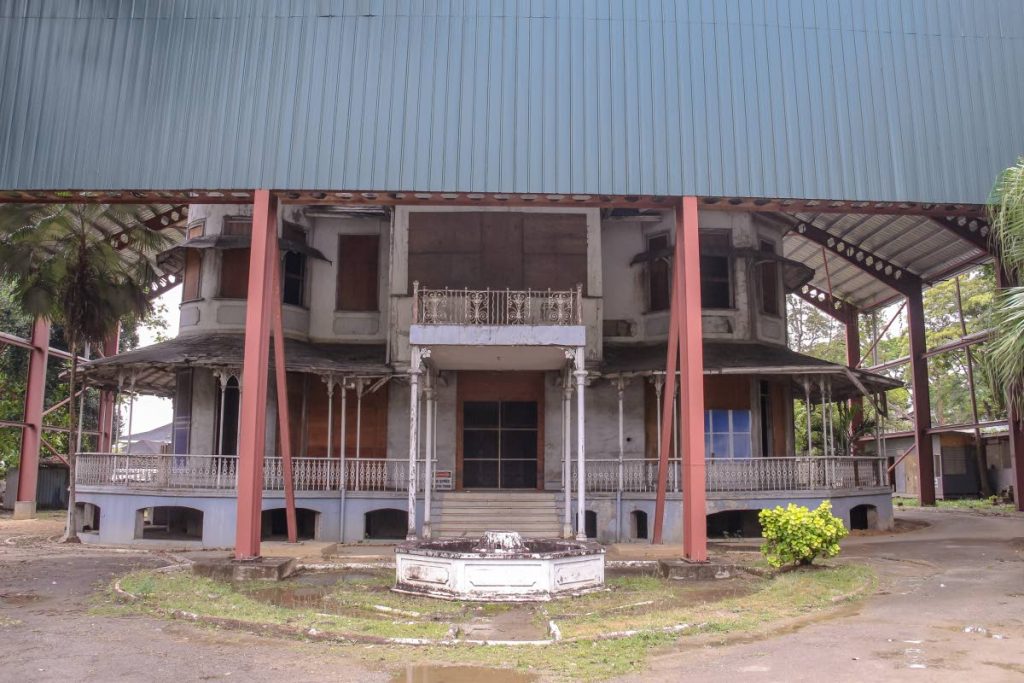
Mille Fleurs
Lot 23 Maraval Road, St Clair, Port of Spain
Mille Fleurs was built in 1904 by George Brown of the Trinidad Trading Company for Dr Enrique Prada, a scholar born in Venezuela who migrated to Trinidad when very young, and stayed. It was the home of the Prada family for 19 years. Dr Enrique Prada was mayor of Port of Spain from 1914-1917. He was educated at St Mary’s College, and won the island scholarship in 1884, going on to study medicine in England. He returned to Trinidad in 1892 and joined the Government Service, becoming the Government Medical Officer.
The Pradas sold the house in 1923 to Joseph Salvatori, and the Salvatori family occupied it until 1971. It passed on to Mrs Pierre Lelong, who kept it for two years, and in 1973 sold it to the merchant George Matouk. The government bought it in 1979.
Named among Trinidad’s Magnificent Seven buildings, the style of Mille Fleurs is close to French Provincial, with intricately carved balusters and elaborate wrought iron columns.
Status
The National Trust website observes that although this building may be one of the Magnificent Seven’s “most gracious and architecturally refined buildings,” it is in an advanced state of deterioration. The government says it aims to restore this structure to its former state, but has not prioritised that project. It is unoccupied and not maintained. The OPM says, however, that the government is currently exploring possible solutions to commence works.

Comments
"Heritage legacy"